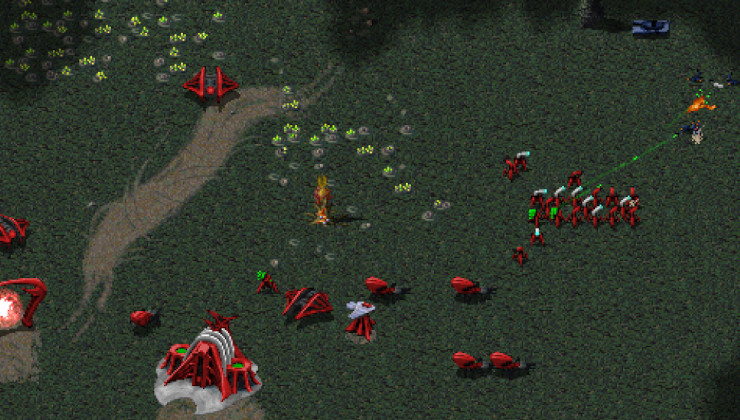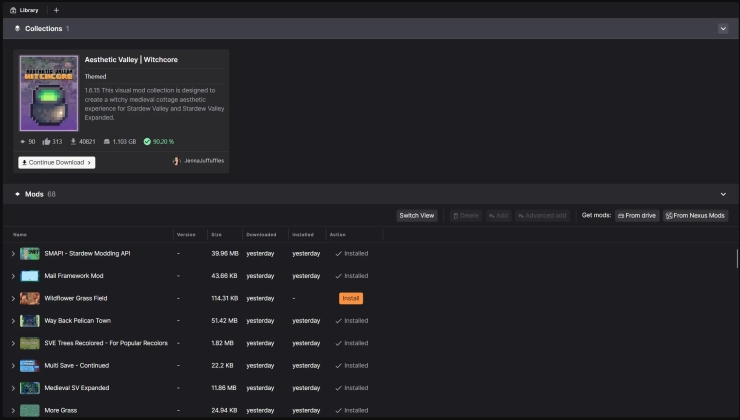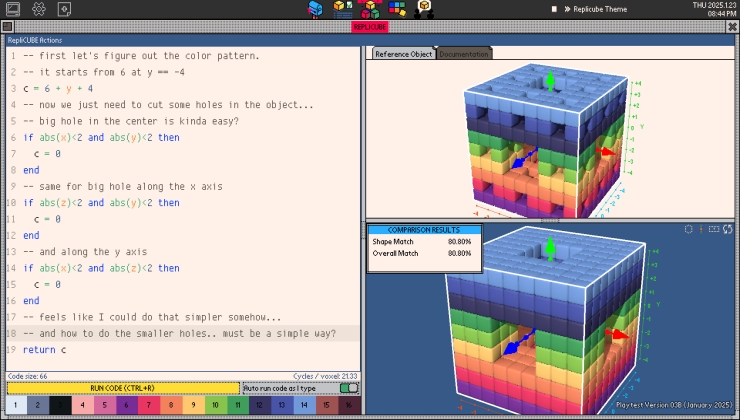Today, NVIDIA released a series of videos with CEO Jensen Huang, taking place instead of the cancelled GTC conference and the Ampere GPU architecture was revealed.
With Turing being the current generation powering GPUs like the GeForce 20 series with their dedicated Ray Tracing cores and GeForce 16 series without RT cores and Ampere is what's going to succeed it. Presenting in their own kitchen due to the Coronavirus, NVIDIA CEO Jensen Huang goes over various hardware advances from Ray Tracing to upscaling and more. However, to make it clear, no new GeForce has yet been announced so nothing on the consumer side is there to really be excited about just yet.
Part 1 can be seen below:

Direct Link
See the whole playlist of the videos on YouTube.
If you're interested in a deep-dive about NVIDIA Ampere, they announced the NVIDIA A100 GPU based on the new NVIDIA Ampere GPU architecture which you can read more about on the NVIDIA devblog post. It sounds like an absolute monster. They also announced the DGX A100, which houses eight of the new A100's "delivering 5 petaflops of AI performance and consolidating the power and capabilities of an entire data center into a single flexible platform for the first time". The first lot of these DGX are going onto help fight COVID-19.
Now that Ampere itself is formally announced it should hopefully mean the next generation of GeForce GPUs aren't too far away from being introduced too. NVIDIA are keeping secretive about it for now. Whenever the new GeForce powered by Ampere happens, we will let you know.
54B transistors, full reticle 7N, 400W+
It's gpgpu specs are up 24% for a mere 33% power increase...
But ML is up 150%, which is fair considering the extra transistor space.
Still I'm not THAT impressed. I expected better.
Last edited by Shmerl on 14 May 2020 at 3:52 pm UTC
For reference TU102 (2080ti) has a die size of 754mm2 and TU104 (2060, 2070, etc) has a die size of 554mm2.
Bigger die size means more power, heat, and space requirements. I'm not really impressed. If anything this announcement has pretty much sealed my next rig being AMD based. Intel discrete GPUs are far enough out that I'm not considering them yet.
Last edited by randyl on 14 May 2020 at 4:54 pm UTC
^_^
OSSing the drivers wouldn't fix anything btw, it'd only make them uncompetitive for a few years, just as it happened with amd. Plus who wants to stay on bleeding-edge just to get a driver update?
You don't have to go bleeding edge, if it's done properly you just have to get the latest drm dkms and the latest Mesa stable. It's pretty much what Nvidia does with their drivers whenever they release a new version.
Last edited by x_wing on 14 May 2020 at 5:38 pm UTC
They had it planned for the original in person event, so regardless of solving problems, it would still be interesting what it is. At least we can laugh at it ;)Nothing on their previous driver open sourcing statement? Sounds like things aren't getting better on the Linux front.
It's literally a hardware event.
OSSing the drivers wouldn't fix anything btw, it'd only make them uncompetitive for a few years, just as it happened with amd. Plus who wants to stay on bleeding-edge just to get a driver update?
They had it planned for the original in person event, so regardless of solving problems, it would still be interesting what it is. At least we can laugh at it ;)
Exactly. So I suppose they scrapped their plans. And it means they aren't solving those problems any time soon.
Last edited by Shmerl on 14 May 2020 at 5:54 pm UTC
Not necessarily, it may just not be part of the keynote and come independently later.Yeah, it could come later and probably will. I think it's the how much later that people are skeptical about, not to mention the quality of that announcement.
This is just my opinion but I think historically AMD's poor market position, compared to Nvidia, has influenced them to be more open and adoptive of open source. That's just my perception. I think Nvidia possibly facing some similar struggles in the future could influence them to be more open source friendly and adoptive. Although I think they have a mountain of tech debt in their driver stack that makes doing so daunting. Also just an opinion.
They were going to have a talk called "Open Source, Linux Kernel, and NVIDIA" in which they said
We'll report up-to-the-minute developments on NVIDIA's status and activities, and possibly (depending on last-minute developments) a few future plans and directions, regarding our contributions to Linux kernel; supporting Nouveau (the open source kernel driver for NVIDIA GPUs, that is in the Linux kernel), including signed firmware behavior, documentation, and patches; and NVIDIA kernel drivers.
So maybe they have a plan to eventually stop making things hard for the nouveau people, and maybe they'll start actually making things easier for the nouveau people, but no announcement about open sourcing their own drivers has been made or implied.
I'm sure it would have been quite an interesting talk, though.
Last edited by CatKiller on 14 May 2020 at 6:54 pm UTC
Last edited by Shmerl on 14 May 2020 at 7:25 pm UTC
It better be powerful, the die size is enormous. From the blog link in the article, "....with a die size of 826 mm2".
For reference TU102 (2080ti) has a die size of 754mm2 and TU104 (2060, 2070, etc) has a die size of 554mm2.
The Volta V100, which is the predecessor of the part talked about in the keynote, has a die size of 815 mm².
The talk was about their HPC and datacentre stuff, and what they'd done with the $7 billion purchase of Mellanox, rather than GPUs. I'm quite interested in the actual details of the Ampere architecture, which I think are due on Tuesday.
GV100 are also large, power hungry, expensive, space sucking die. I feel like you reiterated my point with the comparison. They created a huge hot costly processing unit instead of improving architecture like AMD has done. Piling on more transistors and power to eek out more performance doesn't excite me that much.It better be powerful, the die size is enormous. From the blog link in the article, "....with a die size of 826 mm2".
For reference TU102 (2080ti) has a die size of 754mm2 and TU104 (2060, 2070, etc) has a die size of 554mm2.
The Volta V100, which is the predecessor of the part talked about in the keynote, has a die size of 815 mm².
The talk was about their HPC and datacentre stuff, and what they'd done with the $7 billion purchase of Mellanox, rather than GPUs. I'm quite interested in the actual details of the Ampere architecture, which I think are due on Tuesday.
If anything, I think Nvidia should be concerned because Intel is right around the corner with a die shrink and new server and discrete consumer cards. It's the server cards that should really worry Nvidia, but they'll have pressure on both enterprise and consumer markets. In the last several months Intel has put massive effort into their video driver stack as well, improving performance for existing graphics chips by up to 30%. Nvidia cannot say the same on any platform. And this is important for discrete offering because server architecture is what trickles down into consumer offerings.









 How to set, change and reset your SteamOS / Steam Deck desktop sudo password
How to set, change and reset your SteamOS / Steam Deck desktop sudo password How to set up Decky Loader on Steam Deck / SteamOS for easy plugins
How to set up Decky Loader on Steam Deck / SteamOS for easy plugins
See more from me